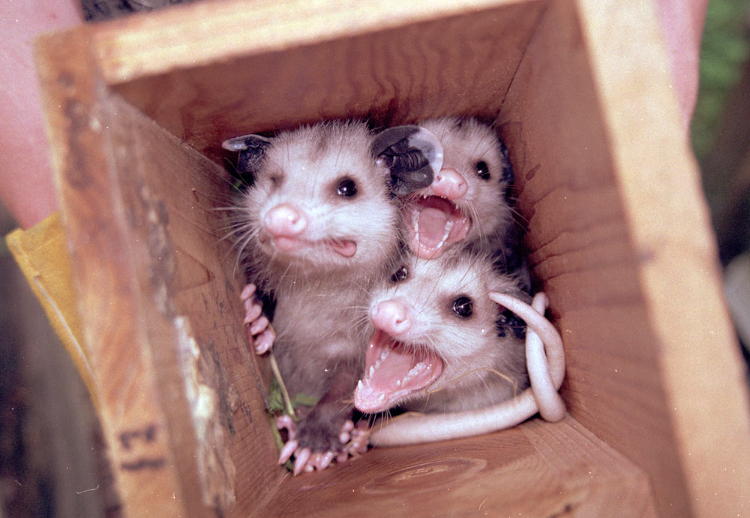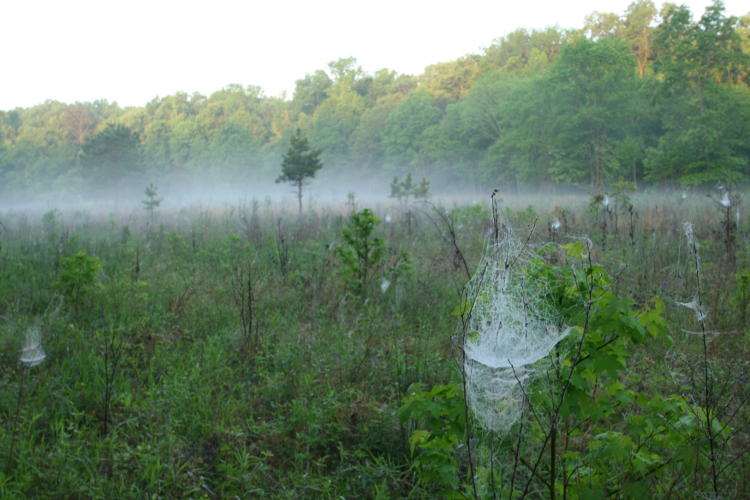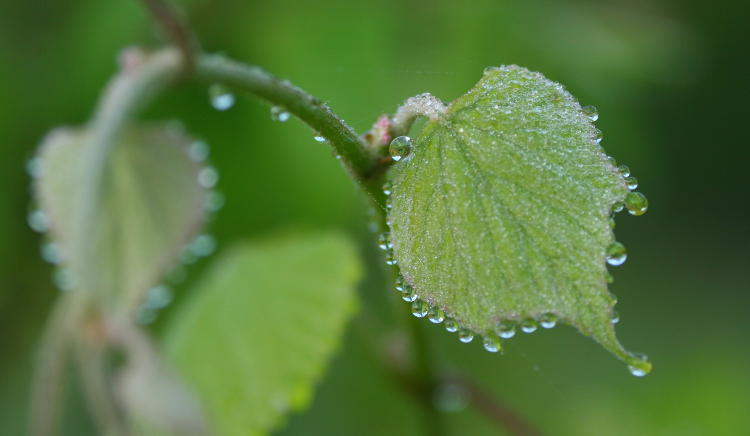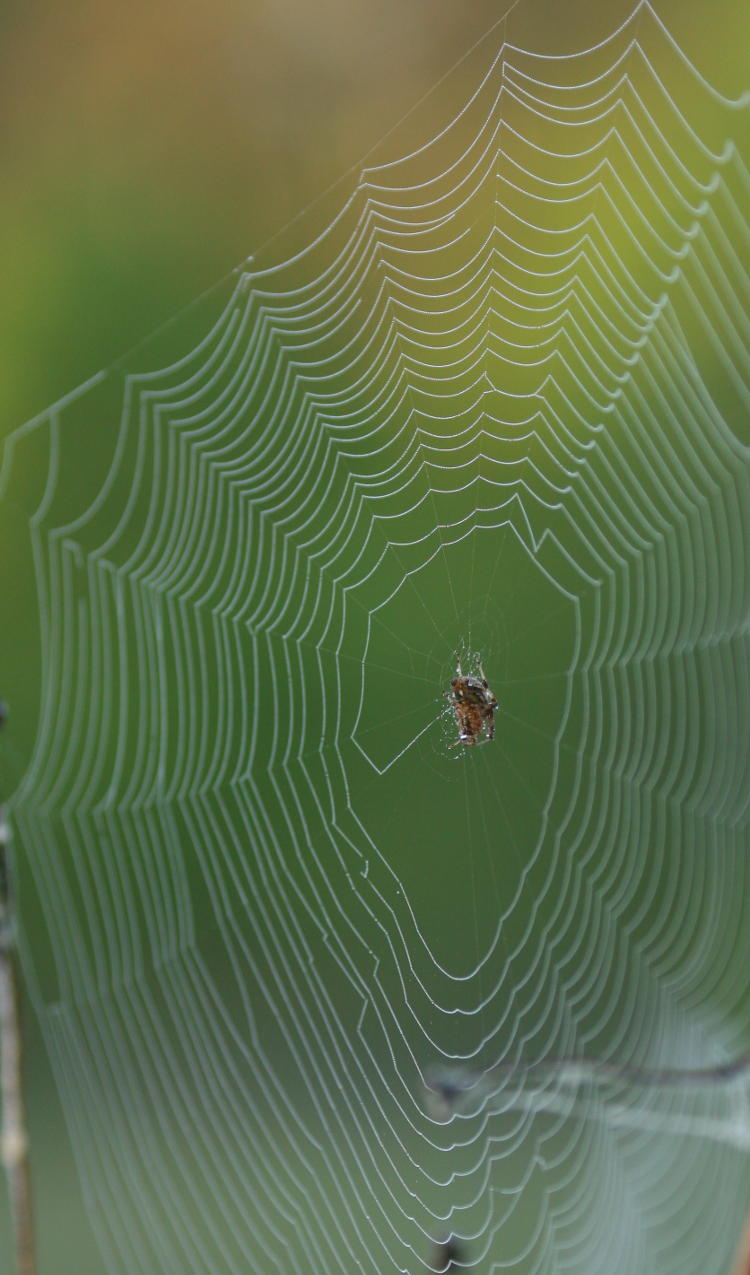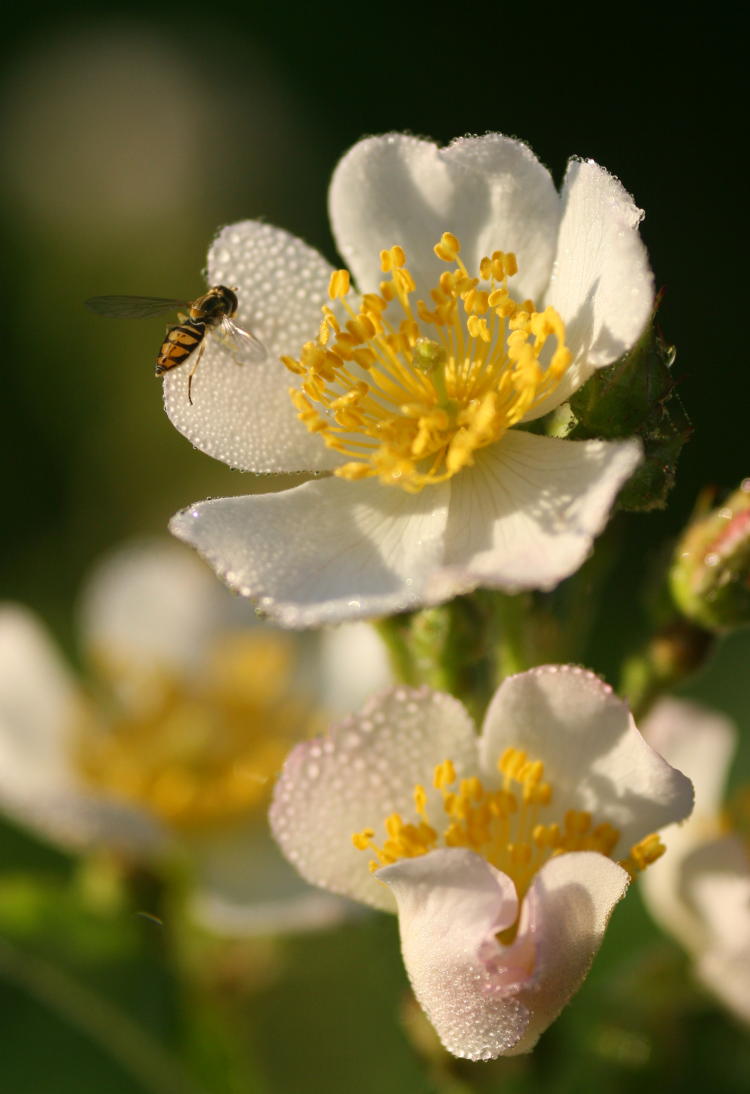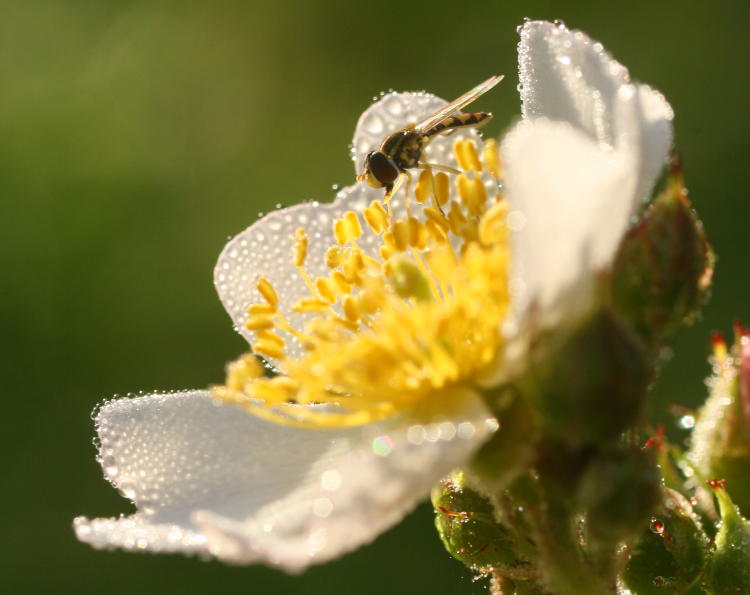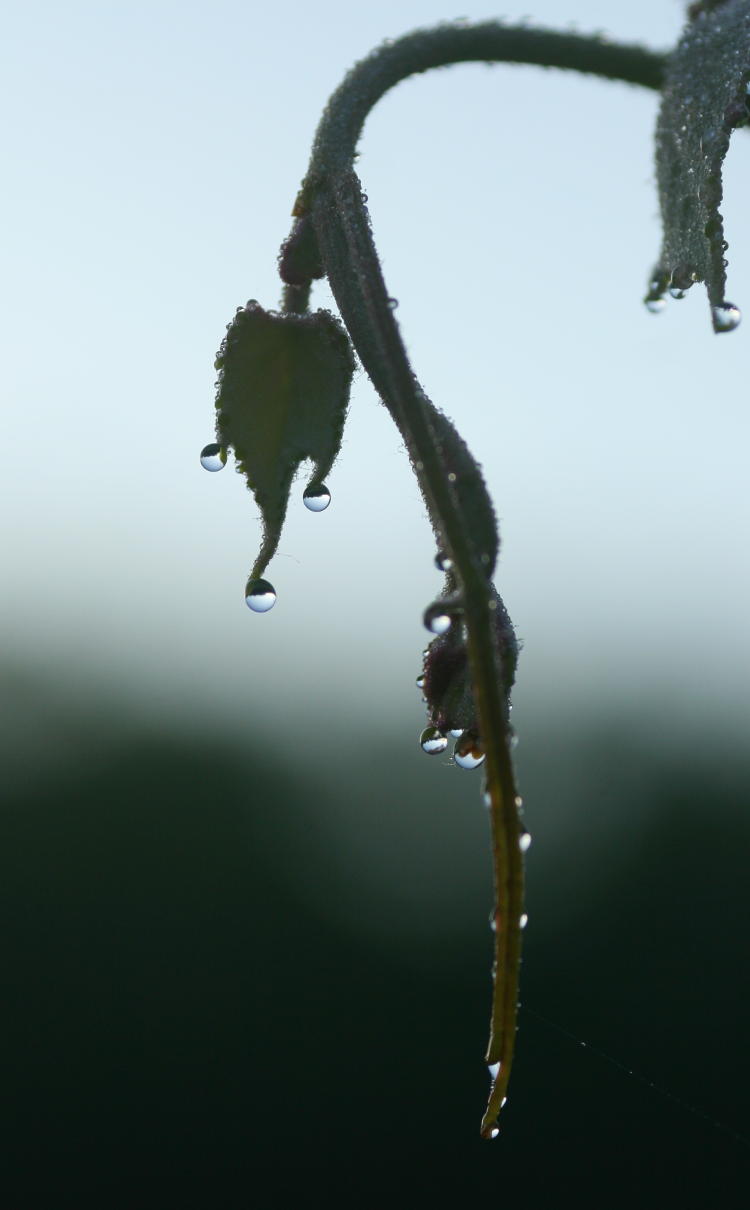If I could effectively communicate the mental turmoil that I’m going through right now, the seething internal struggle, with mere words, I would, but I sincerely doubt that you’re understanding it on an emotional level. However, with at least two posts in the pipes regarding the South Carolina trip, I’m not only going to talk about photos obtained after said trip, I’m going to put them up in reverse order of when they were obtained. I know, I know, but sometimes I just feel a little reckless, and damn the consequences.
N-no.
No, I’m sorry, I can’t fully commit to this. I’ll give a distant nod to propriety and post the very most recent photo last. Some things you just don’t toy with.
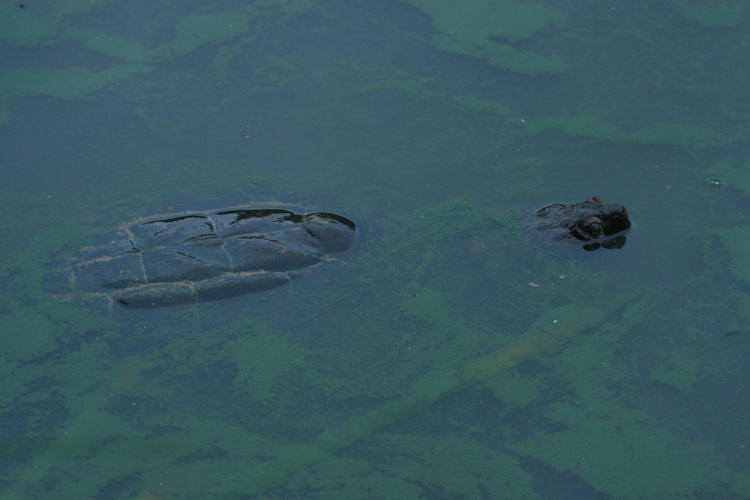
A couple mornings back, I was up early and saw what might have been promising colors starting in the sky from the imminent sunrise, and I headed over to the neighborhood pond to see what would happen. The sky never really developed anything useful, there being low-level clouds blocking most of the light, and I simply grabbed a few photos of opportunity. In this case, a common snapping turtle (Chelydra serpentina) was poking around in the shallows under the moody grey sky, and I managed a couple of frames before it realized how close I was and moved off. At first light, lots of turtles were poking their heads out (I’m sure most of us can relate,) but getting decent photos of them was challenging, given the conditions. This one, however, stayed still enough, in just barely enough light, to allow me a dramatic portrait with the 100-300 lens. There’s something to be said about the whole color register.
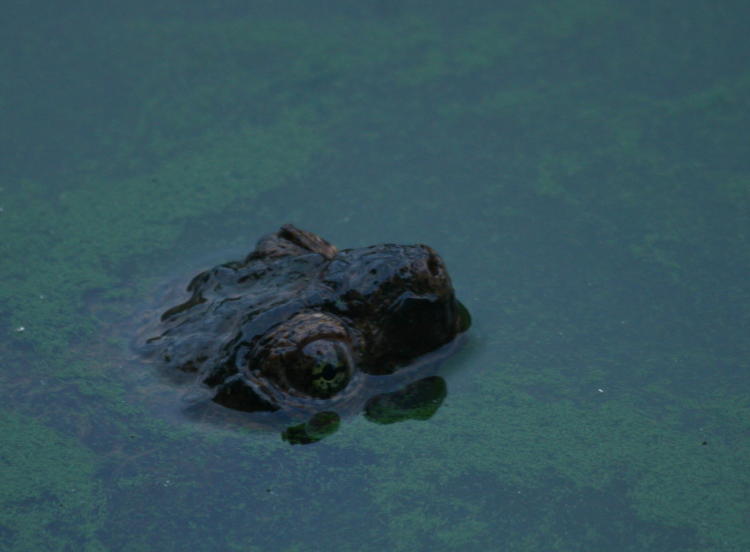
If you want a scale, the portion of the head appearing here was maybe 3cm in length, the overall length of the carapace falling somewhere around 30-35cm, I would estimate. Which is way bigger than my next subject.
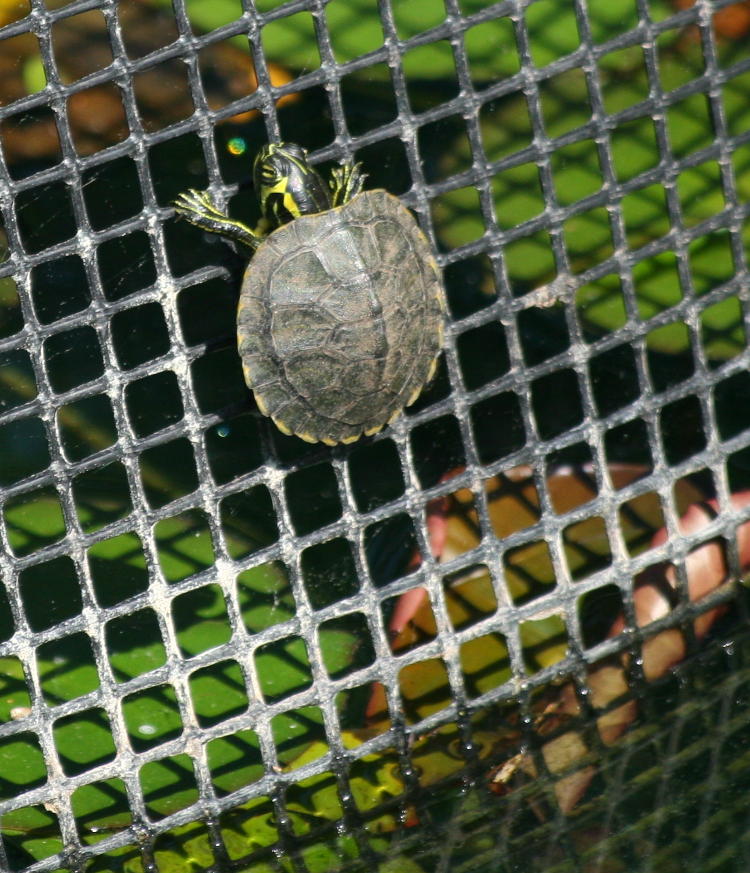 About to meet with a student in a botanical garden, I was just poking around and had to shoot this minuscule turtle, who seemed miffed that it was being excluded from the pond lilies within a net barrier. Actually, it’s much more likely that it was simply looking for a basking spot in a pool with few opportunities for such, but yeah, if you’re getting the impression of a toddler trying to scale the baby gate during a party among the grownups, I cant blame you.
About to meet with a student in a botanical garden, I was just poking around and had to shoot this minuscule turtle, who seemed miffed that it was being excluded from the pond lilies within a net barrier. Actually, it’s much more likely that it was simply looking for a basking spot in a pool with few opportunities for such, but yeah, if you’re getting the impression of a toddler trying to scale the baby gate during a party among the grownups, I cant blame you.
During an earlier outing with the Iconoclastic Mr Bugg, we were wandering a less-than-productive section of Jordan Lake when I suddenly spotted an eastern kingsnake (Lampropeltis getula) – despite the promises, about every place I’ve lived, that kingsnakes are common, it’s been decades since I’ve seen one, and I think this is the first that I’ve ever photographed. Don’t ask me how that happens. Maybe I’m naturally kingsnake repellent (there are a few people I know that would say it’s not that specific.)

Buggato has had more than enough time to scoop me on these with his own photos, since he seems to like doing that, but it’s been twelve days since we obtained them, and I can assure you that there is no such post on his site as of this writing – now that I’ve mentioned it, something might, somehow, pop up from the past, but right now, zilcho.
Anyway, as we moved quietly around the snake, it decided it should seek cover, but in a remarkably mellow way. With elaborate casualness, it started slipping forward and wended a meandering route through the undergrowth, disappearing under leaves or logs before reappearing again on the other side, seeming to have no inclination to remain hidden.
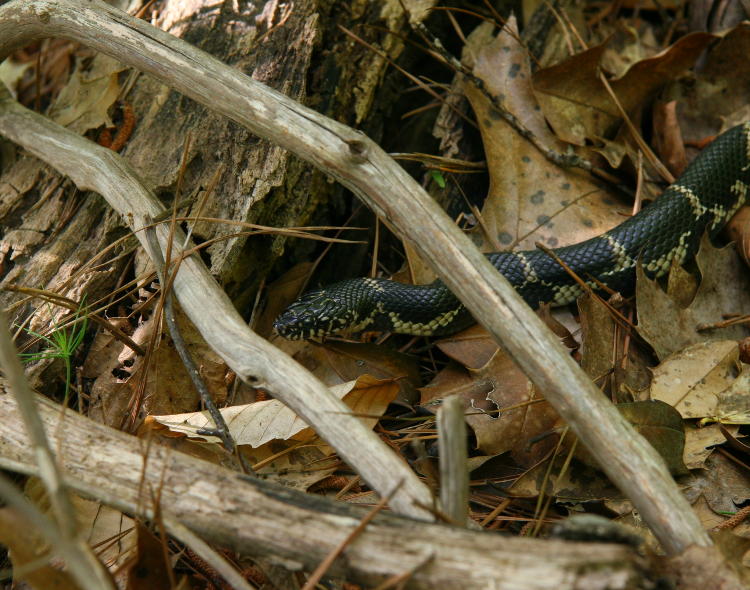
It was later afternoon on a pretty warm day, so none of the behavior could be put down to morning torpor, but the snake sure looked completely unconcerned, as if bored and deciding to poke around a little. However, I suspect there was a different explanation.
 The kingsnake actually came around in a broad curve, almost emerging from under a log at my feet (being literally 10cm from my sandals,) before it looped over top of the same log and slipped around the end into a hollow, where it disappeared and remained hidden, despite our waiting for a few minutes. I believe that, as we approached, we got between it and its sleeping spot, and so it had to take a circuitous route back home, as it were. Given the coloration (which works much better for hunting at night,) the species may be inclined to move slowly in daylight to avoid attracting attention, unless danger is distinctly imminent, and we were being quite innocuous ourselves. That’s my guess, anyway.
The kingsnake actually came around in a broad curve, almost emerging from under a log at my feet (being literally 10cm from my sandals,) before it looped over top of the same log and slipped around the end into a hollow, where it disappeared and remained hidden, despite our waiting for a few minutes. I believe that, as we approached, we got between it and its sleeping spot, and so it had to take a circuitous route back home, as it were. Given the coloration (which works much better for hunting at night,) the species may be inclined to move slowly in daylight to avoid attracting attention, unless danger is distinctly imminent, and we were being quite innocuous ourselves. That’s my guess, anyway.
By the way, overall length was about a meter, which is half of their maximum length, give or take, and they’re completely harmless.
Later on that day, we hit another portion of the lake because the initial one had been so slow, and it was there that Mr Bugg captured his excellent bald eagle shot – I looked up in time to only see it disappearing behind the trees, so no pic for me. However, hanging out for a few minutes more netted me a nice sequence of another species, and I’m pleased with the dramatic poses, so no skin off my nose. Actually, that’s a stupid phrase, isn’t it? Strike that.
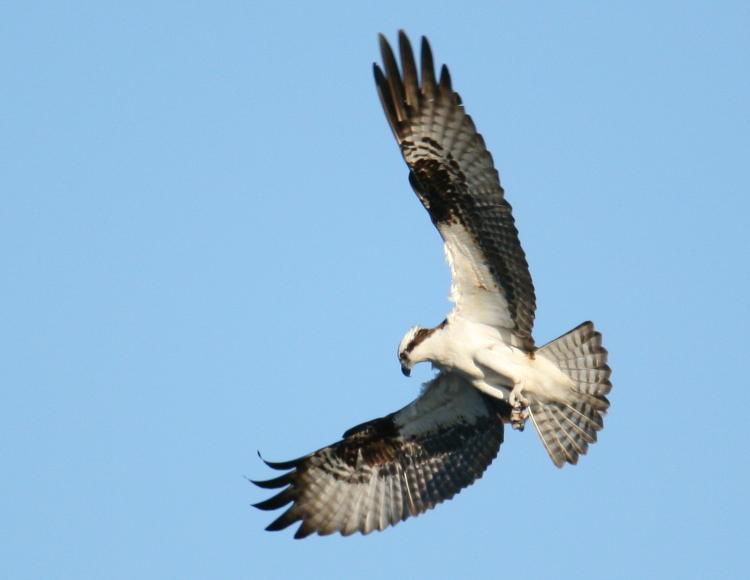
An osprey (Pandion haliaetus) was doing its thing, cruising around between 10 and 40 meters up, looking for stupidly shallow fish. Focus tracking was just slightly off at times, but then bang on at others, as I watched it begin its dive after some fish that it had spotted. Later in the afternoon now, the sun was lower for more dramatic lighting, good for shooting birds (because they don’t look very impressive when backlit,) and yet still not turning yellow.

These are all tightly cropped from the original, because I really wanted to highlight the body positions. I was firing off a sequence, hoping to catch a really dynamic shot of the osprey seizing its prey, so these are fractions of a second apart.
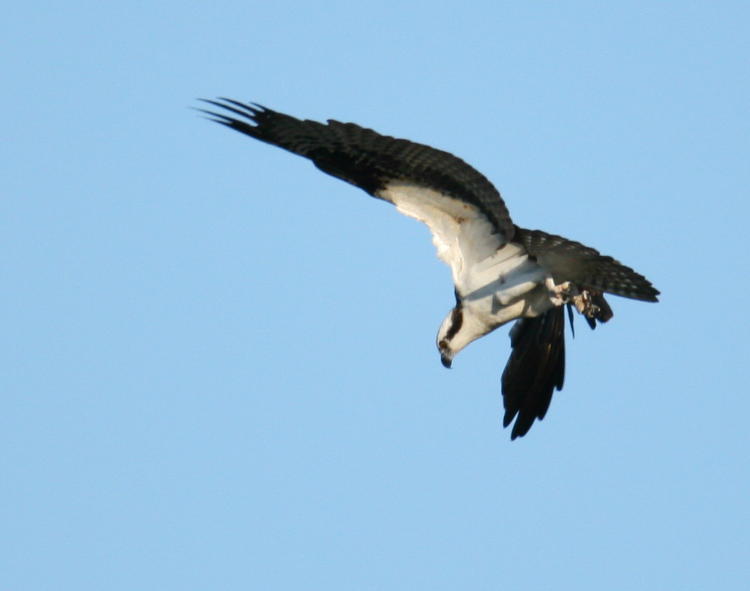
There’s a fair amount of luck involved, because the osprey had to be in the right position for the best lighting and appearance, but then again, I’d been tracking it in the viewfinder for several minutes at this point, waiting for the chance of something cool, so I’ll take credit for that, at least.
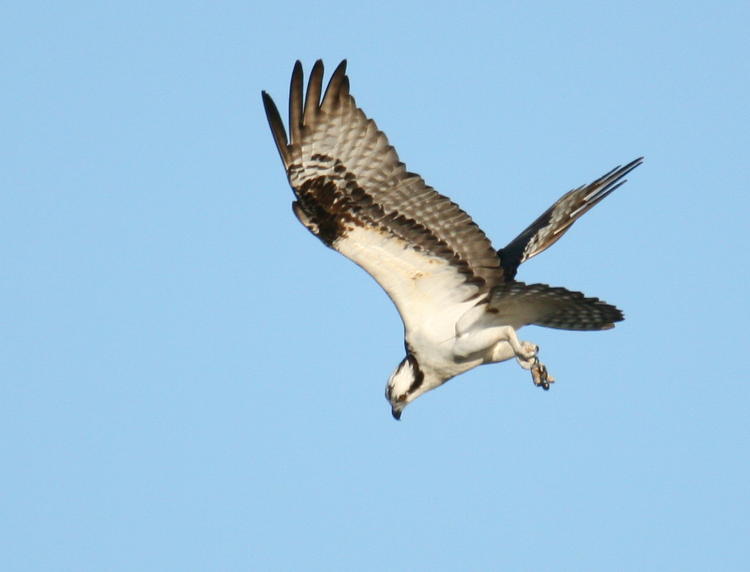
Note the turning head, watching its prey, and the talons dropping into readiness. Why aren’t they named, ‘ospredators?’ Stupid ornithologists.

The lovely line from eye to wingtip, the fanned tail, the intensity. Clean living and pure thoughts – they had absolutely nothing to do with this capture sequence, so don’t believe what anyone tells you otherwise.
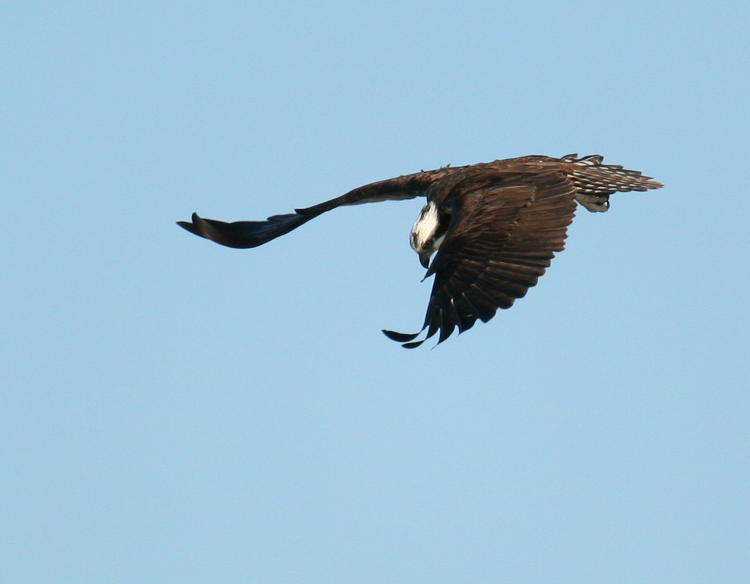
Annnnddd the intended prey made its exit, so the osprey abandoned the dive – which still looked pretty cool. Osprey are strictly fish eaters, by the way, and pretty common around Jordan Lake, but I’ve never staked them out for a long session dedicated to birds. I’ll have to correct that soon.
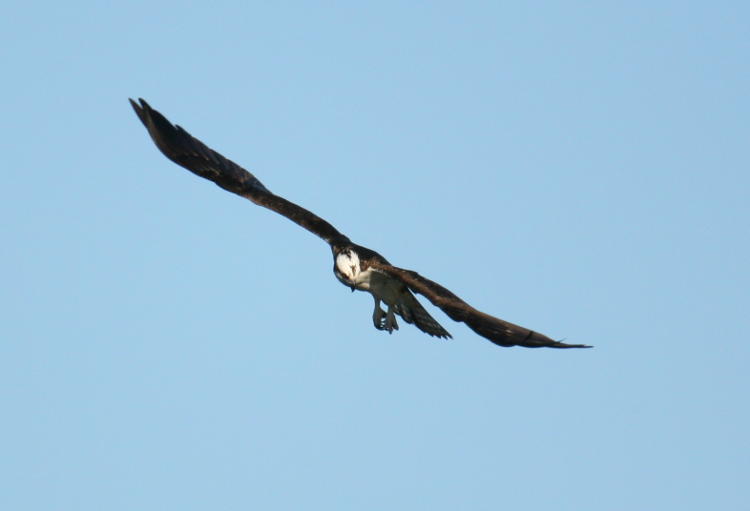
The osprey resumed its circling, looking for more opportunities. If you look closely, you can see the head is still tucked and turned, searching – there’s the tip of the beak and a little pointer of dark feathers atop the head that indicate where it’s looking (which makes me wonder if this provides some benefit to the species, perhaps indicating to other birds where their attention is.)
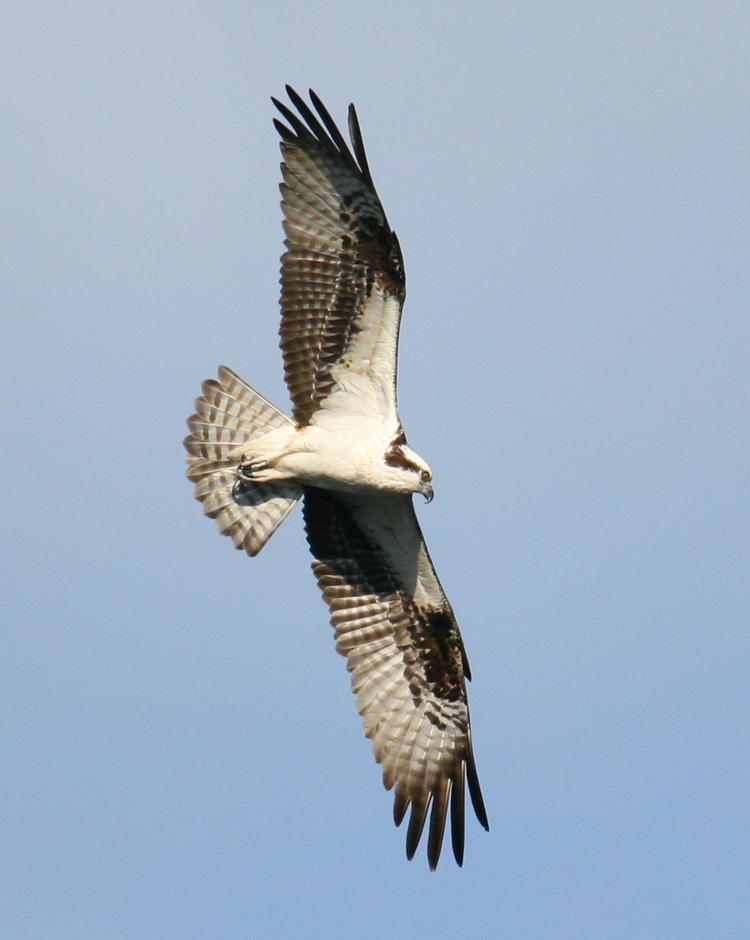
Notice the difference in background color here – less than a minute after the above sequence, it had moved to a different patch of sky to give me a brilliant underbody view. Well, no – while it was quite well aware of our presence, I’m sure, it probably wasn’t interested in accommodating our paparazzism in any way.
Okay, now we get to the most recent, taken just two nights ago at sunset. The sky again didn’t fully cooperate, but there was a lone patch of cloud colored peach by the disappearing sun, and I used the reflection of it in the neighborhood pond as a backdrop for a dragonfly that briefly perched on a bare branch.
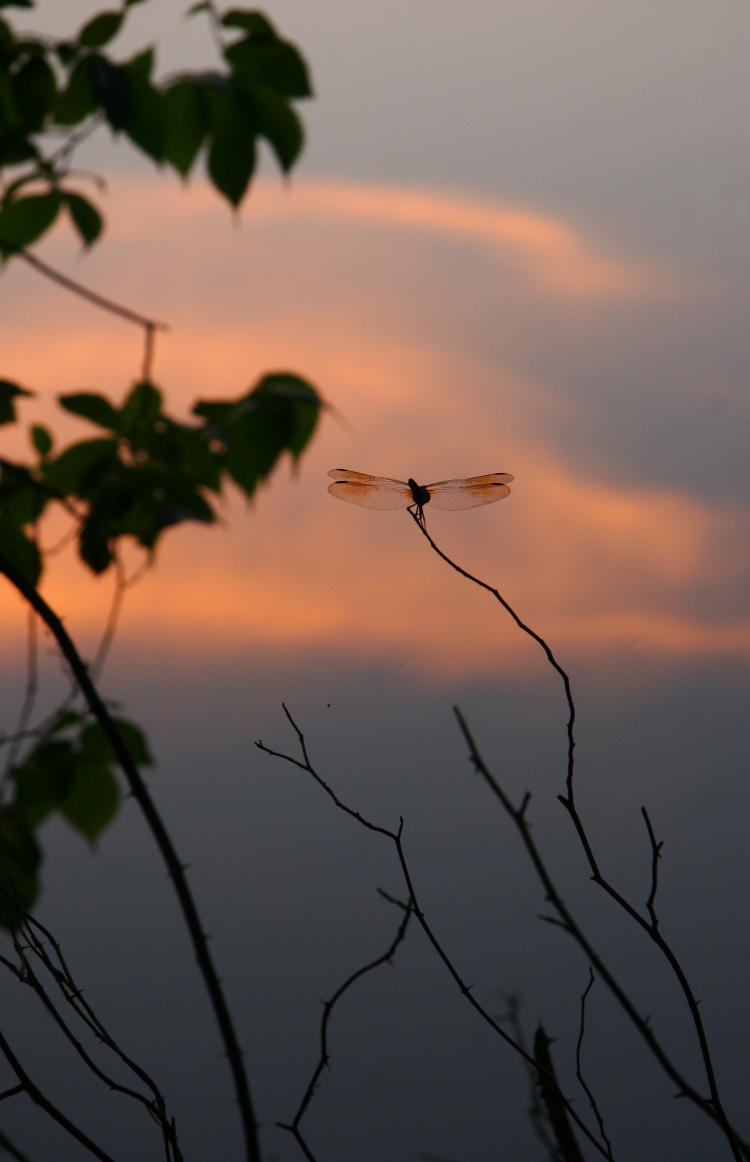
And, just to show off, I include a full-resolution inset of the same frame. By happenstance, the dragonfly had perched almost directly facing away from me, putting its wings in a nice plane flat to the camera for maximized sharpness, because it was just a few days full of cooperative critters.
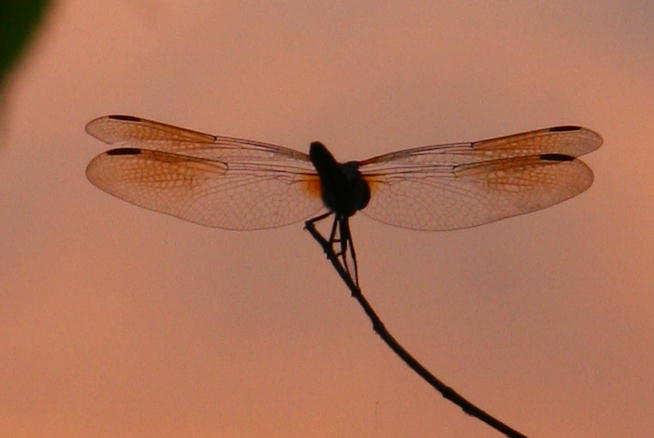
And we will now resume our SC pics. Maybe – I never know for sure what will strike me to post, but they’re coming at some point anyway. And you know how I said a bunch of bird pics were coming soon? These were not them, or any portion thereof – I gots lots more on the way.





















































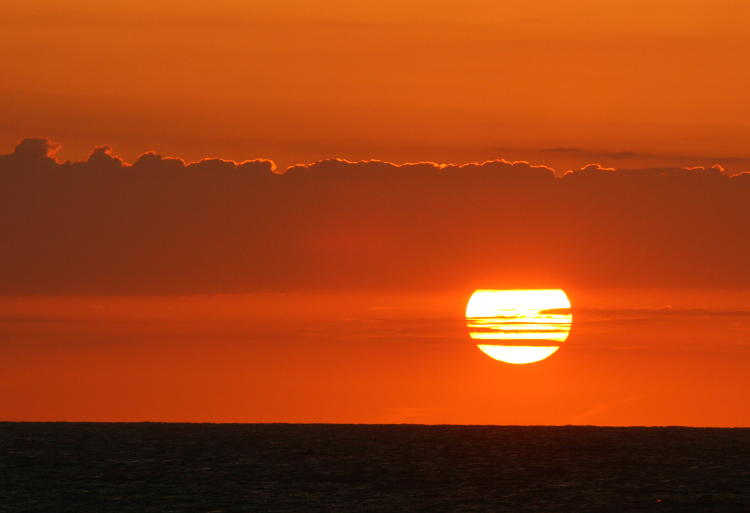
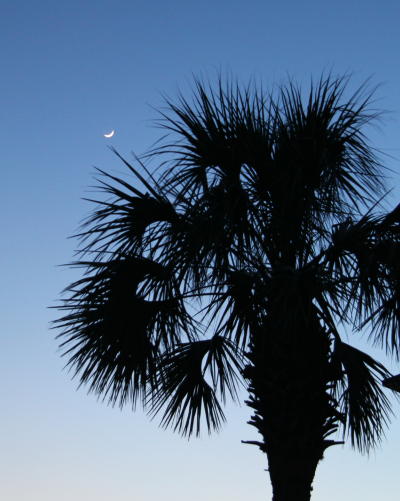 We now resume our adventures in coastal South Carolina, and if you’re at all familiar with the state, you know that it is symbolized, on license plates and numerous other materials, by a crescent moon over a palm tree; naturally enough, presented with the opportunity while there, I had to provide my own rendition.
We now resume our adventures in coastal South Carolina, and if you’re at all familiar with the state, you know that it is symbolized, on license plates and numerous other materials, by a crescent moon over a palm tree; naturally enough, presented with the opportunity while there, I had to provide my own rendition.  The weather was notably clear for almost the entire week, which is good and bad; good for the opportunity for the flash, but otherwise it doesn’t produce much in the way of colorful skies and cloud patterns and all that. The first morning out there, I was standing ready with the Canon 100-300 L affixed, and dutifully fired off numerous frames as the sun peeked through. It looked green in the viewfinder, but the resulting photos didn’t support the idea very much, and I am forced to conclude that either my eyes interpreted it as green after seeing nothing but red-orange before, or the lens and exposure rendered it more yellow than it was. Call it a miss.
The weather was notably clear for almost the entire week, which is good and bad; good for the opportunity for the flash, but otherwise it doesn’t produce much in the way of colorful skies and cloud patterns and all that. The first morning out there, I was standing ready with the Canon 100-300 L affixed, and dutifully fired off numerous frames as the sun peeked through. It looked green in the viewfinder, but the resulting photos didn’t support the idea very much, and I am forced to conclude that either my eyes interpreted it as green after seeing nothing but red-orange before, or the lens and exposure rendered it more yellow than it was. Call it a miss.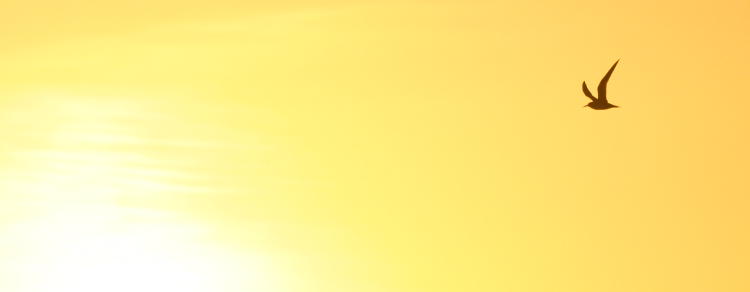
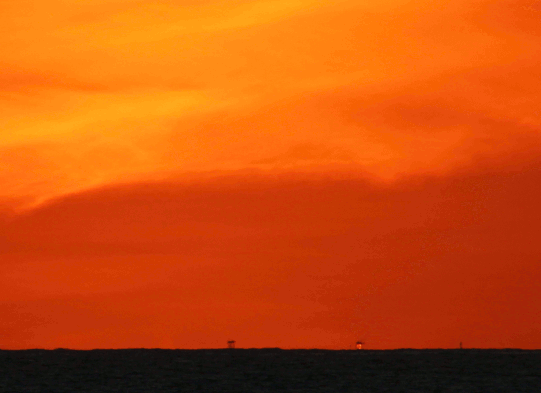 I don’t think anyone can deny it – that’s freaking green. This is significantly magnified of course, and I’m not sure whether or not anyone could have seen this by naked eye.
I don’t think anyone can deny it – that’s freaking green. This is significantly magnified of course, and I’m not sure whether or not anyone could have seen this by naked eye.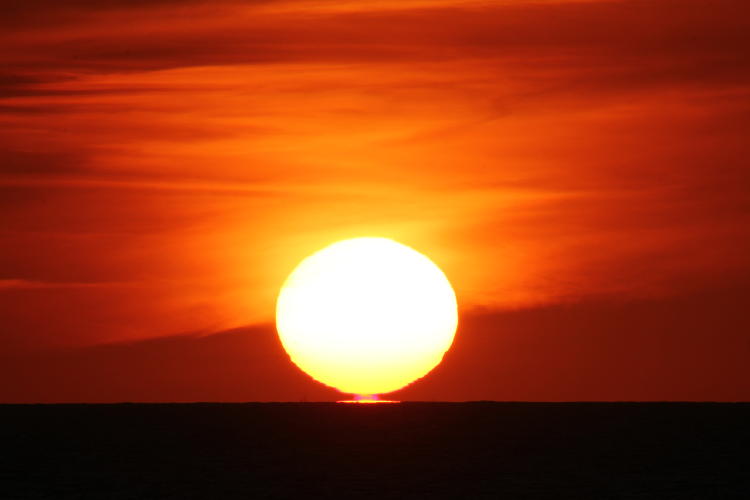
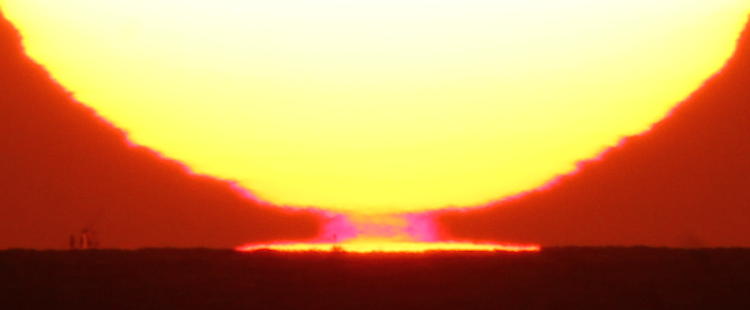
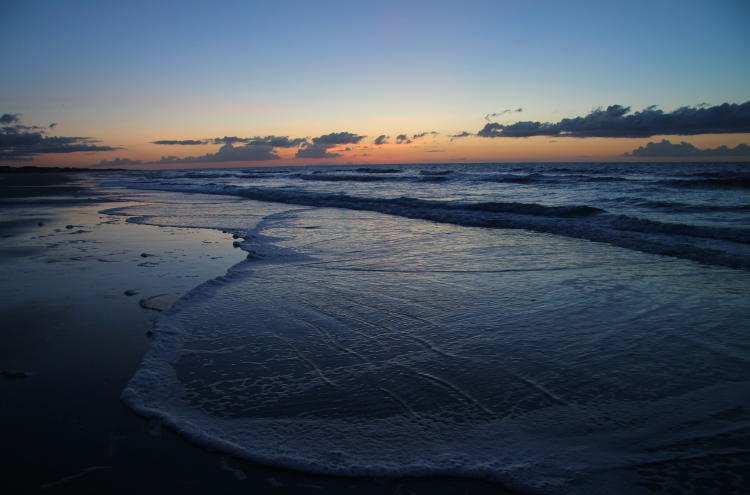

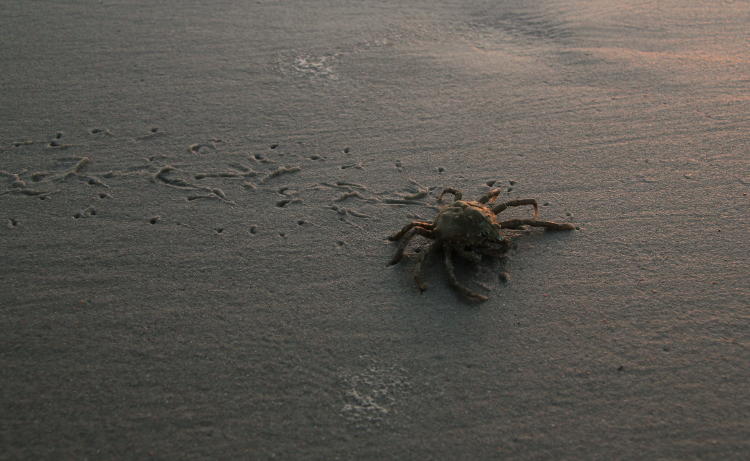
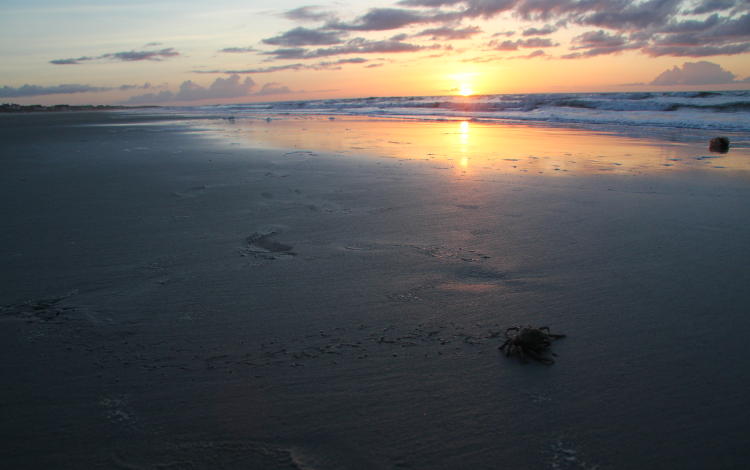
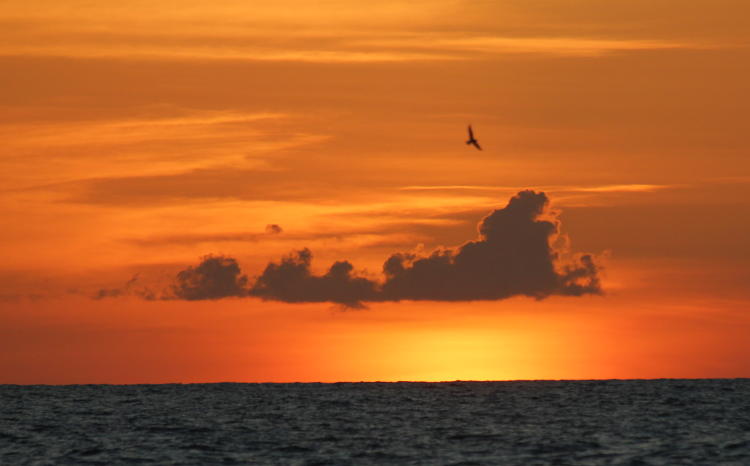
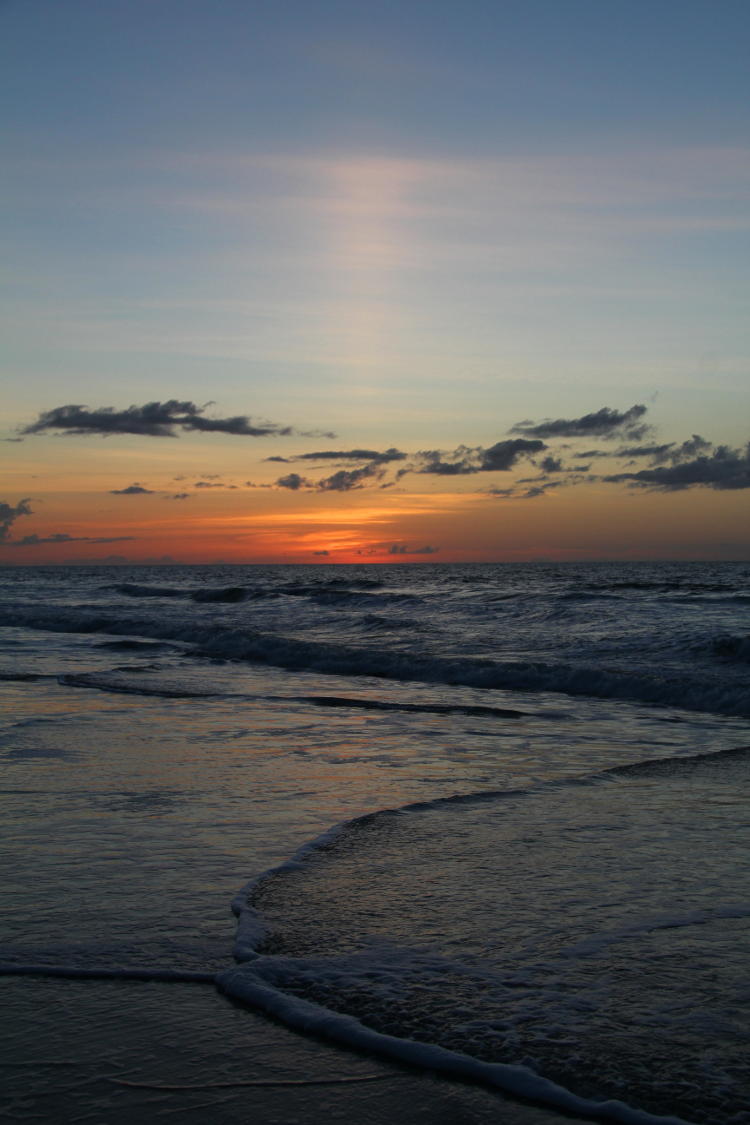
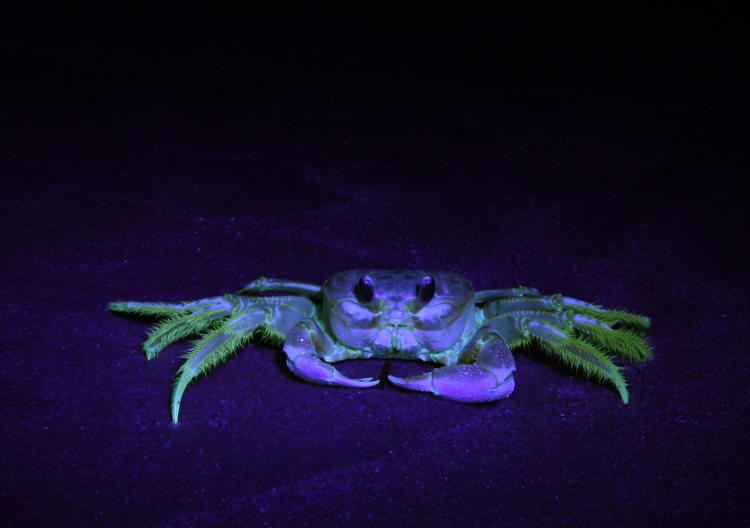
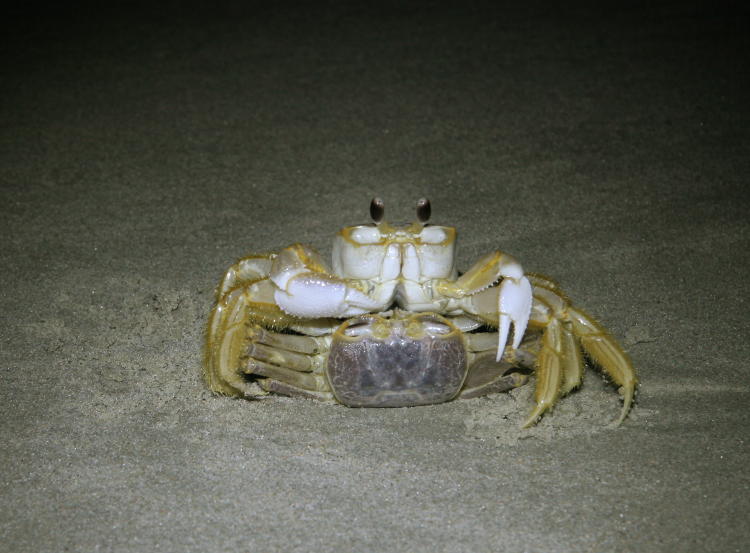
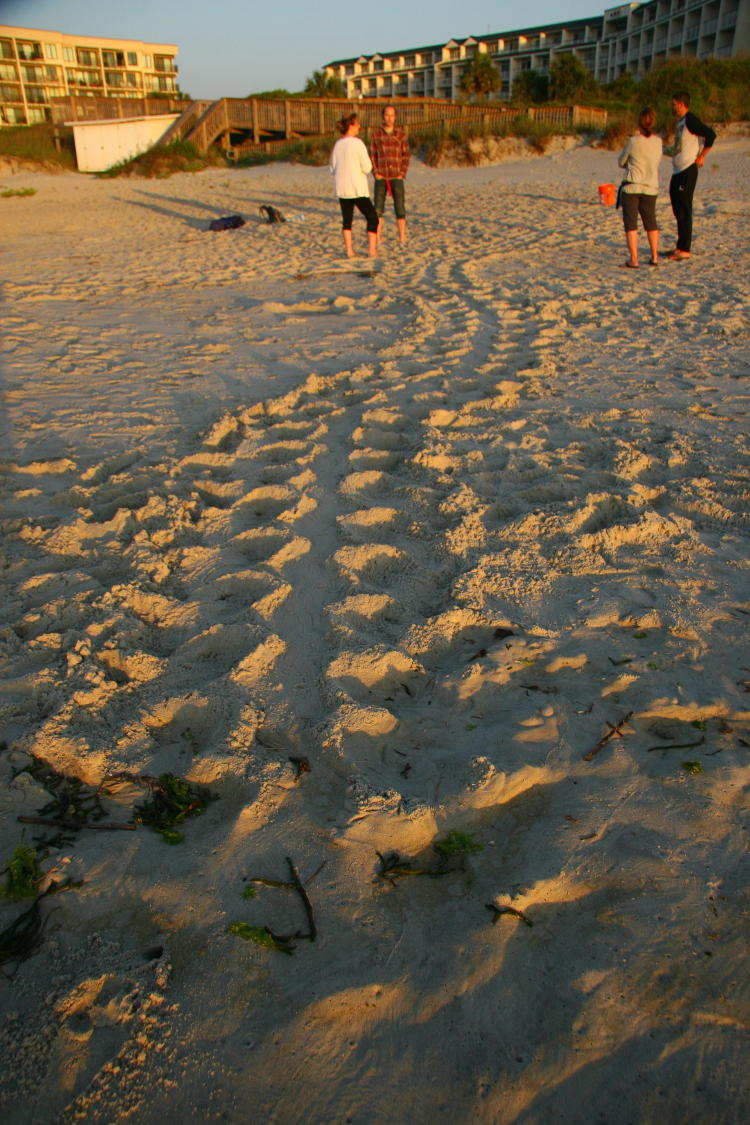
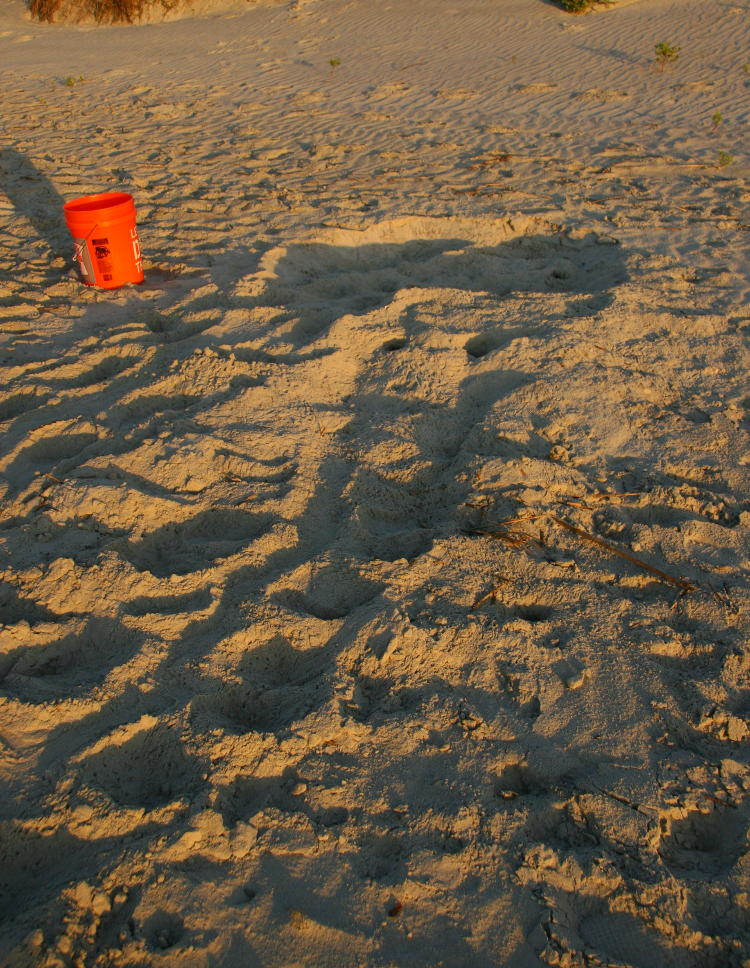

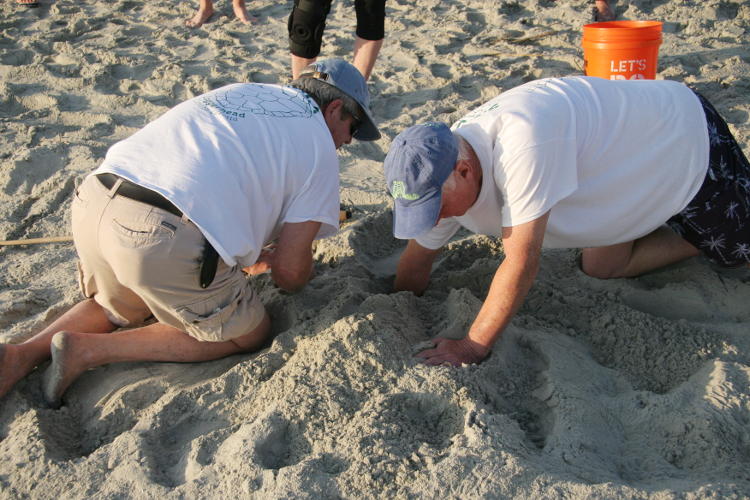

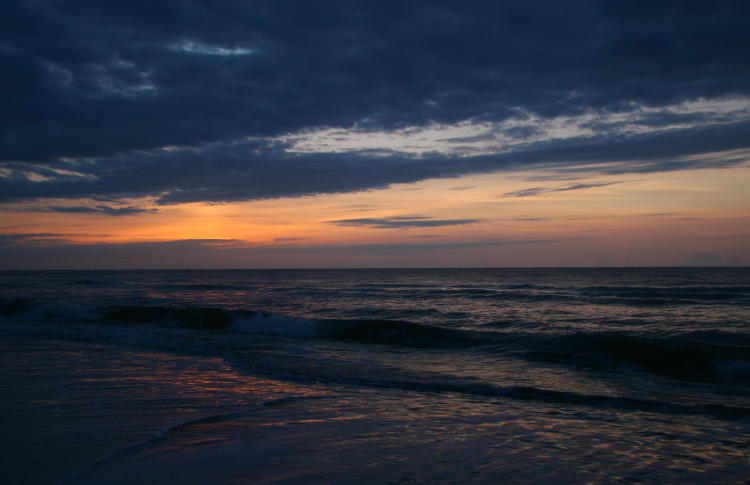
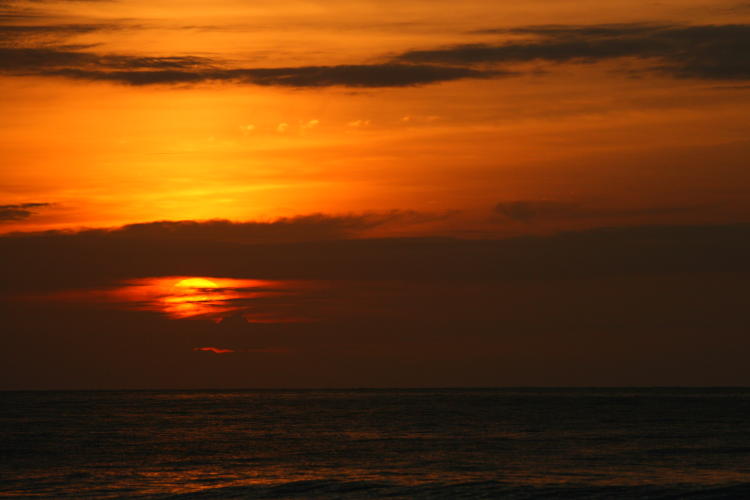

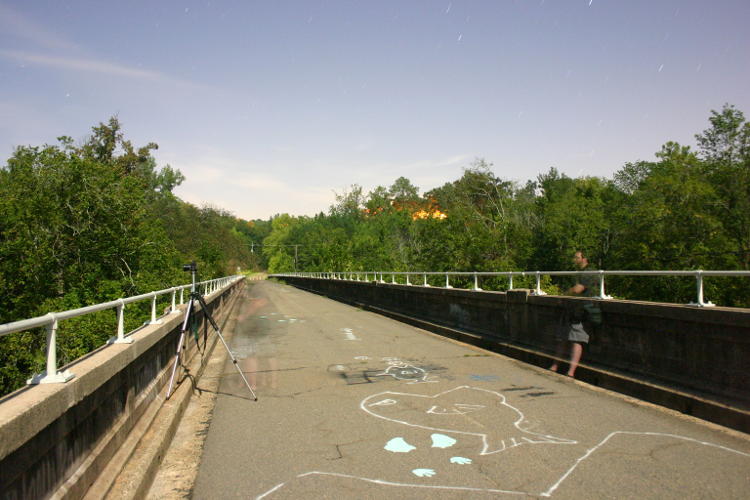
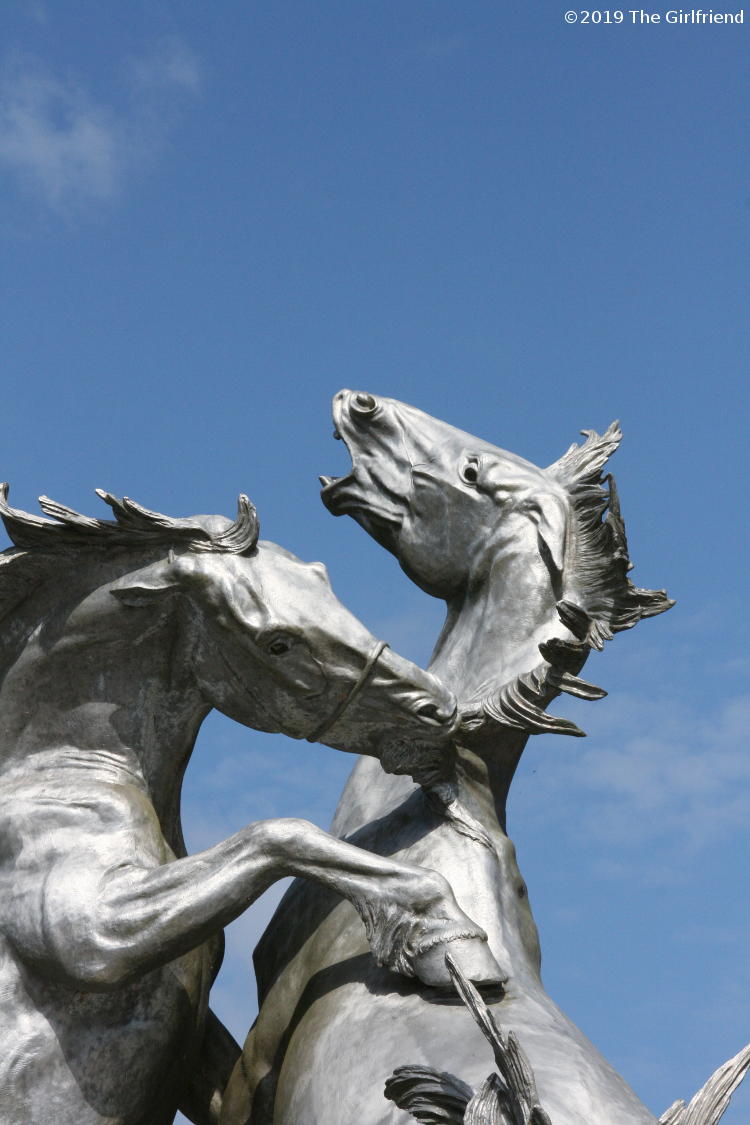

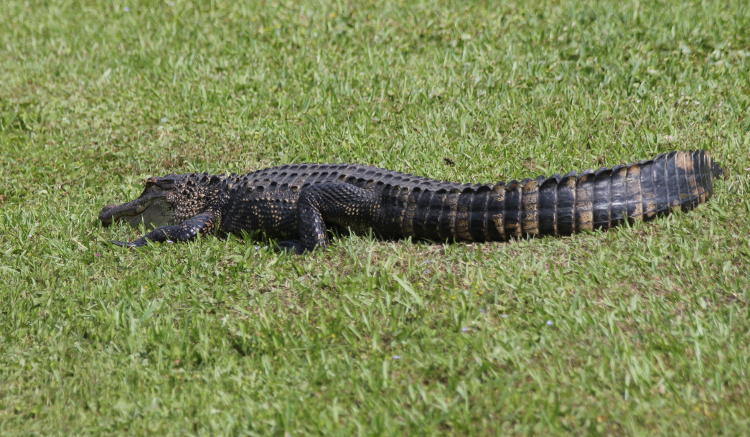

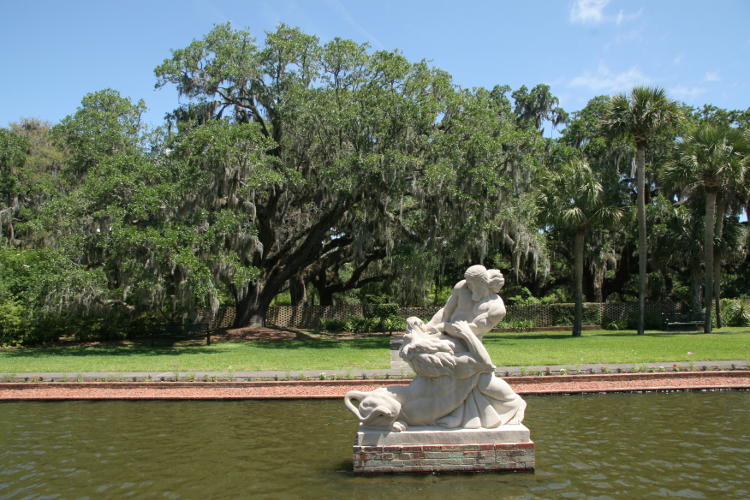

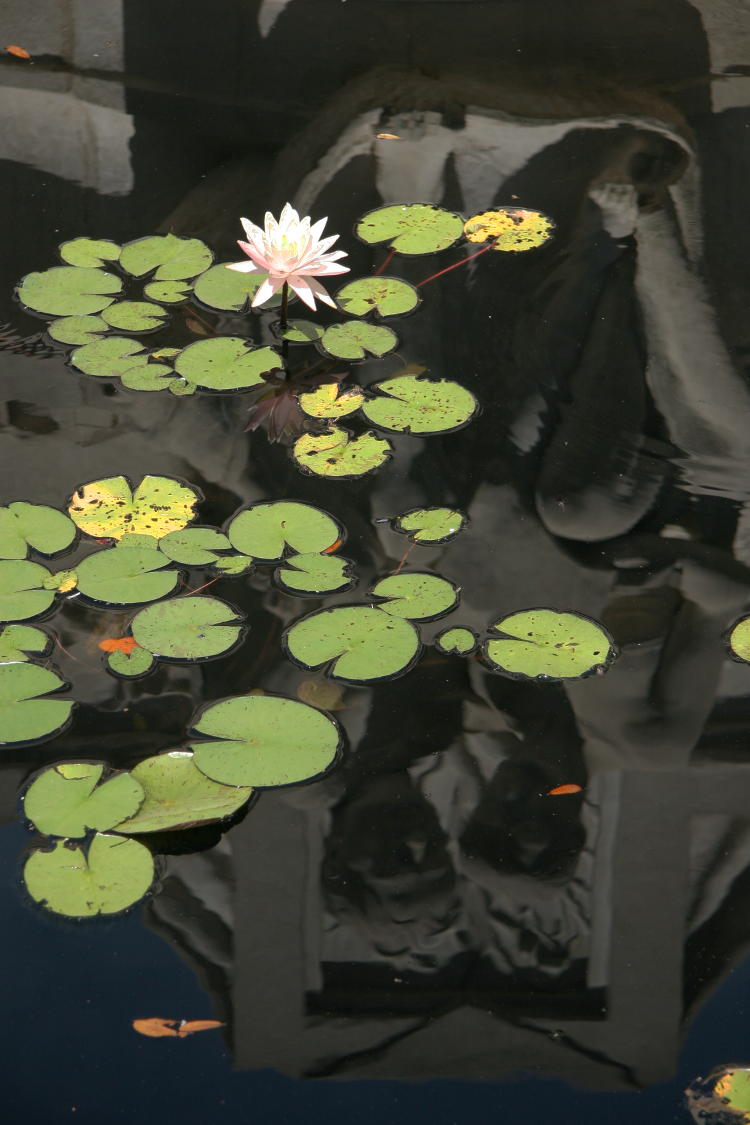

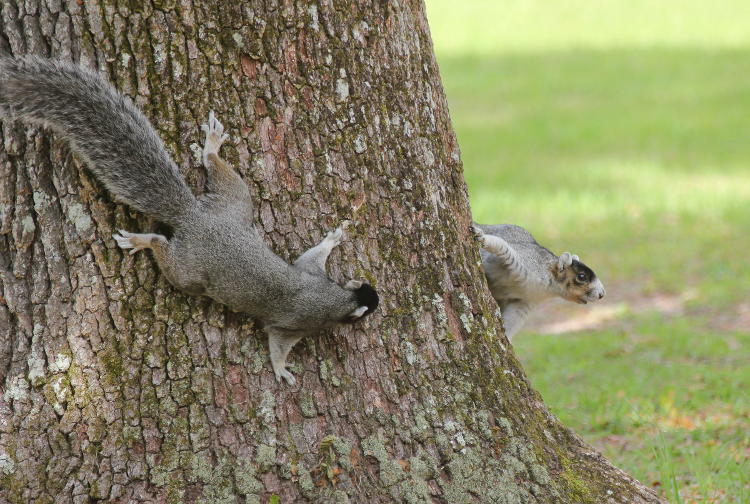
 It turns out that these were actually southern fox squirrels (Sciurus niger niger,) a species that I never knew existed, and there’s a wide variety of coloration, two of which are seen here. They were all over the place in Brookgreen, but I never saw one anywhere else, even in the state park that was adjoining the gardens. I liked their colors, especially the fawn-faced ones, which helped me to overlook that they were squirrels and still, like around here, a bit of a pain. In and of themselves, they don’t bother me, but they tend to overpopulate an area and do too much damage to, for instance, the eaves of the house and any mantis egg cases I’m patiently waiting to see hatch. We got our photos of them, for novelty’s sake, but will probably reclassify them mentally as ‘just another squirrel’ soon enough.
It turns out that these were actually southern fox squirrels (Sciurus niger niger,) a species that I never knew existed, and there’s a wide variety of coloration, two of which are seen here. They were all over the place in Brookgreen, but I never saw one anywhere else, even in the state park that was adjoining the gardens. I liked their colors, especially the fawn-faced ones, which helped me to overlook that they were squirrels and still, like around here, a bit of a pain. In and of themselves, they don’t bother me, but they tend to overpopulate an area and do too much damage to, for instance, the eaves of the house and any mantis egg cases I’m patiently waiting to see hatch. We got our photos of them, for novelty’s sake, but will probably reclassify them mentally as ‘just another squirrel’ soon enough.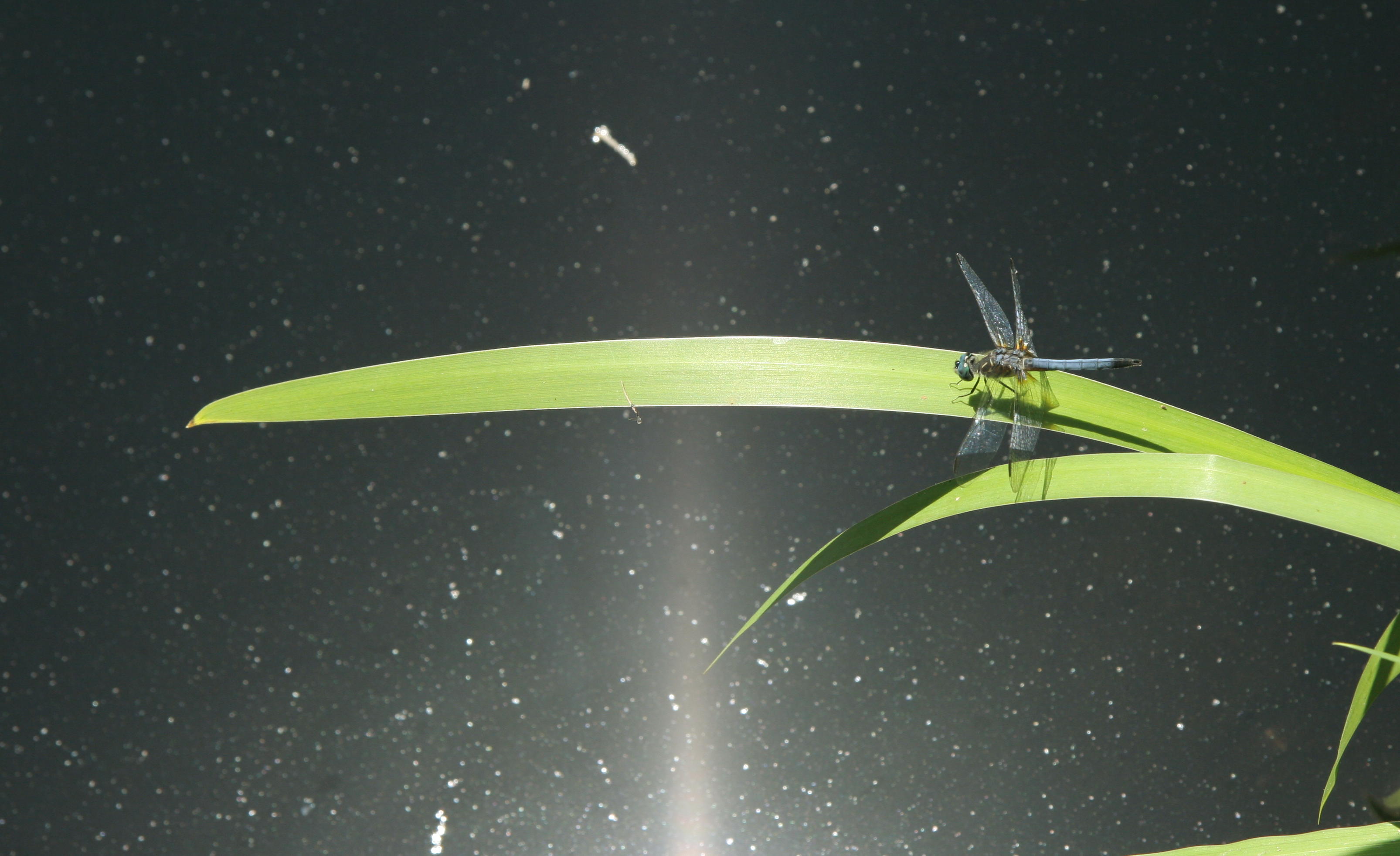


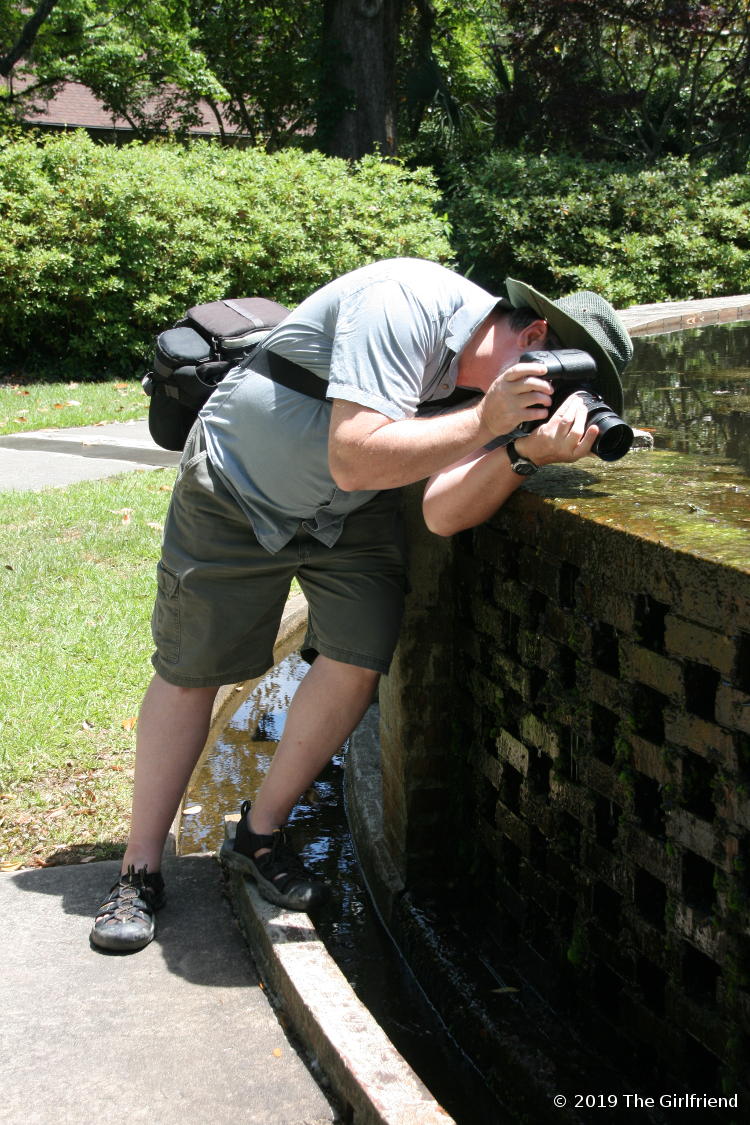


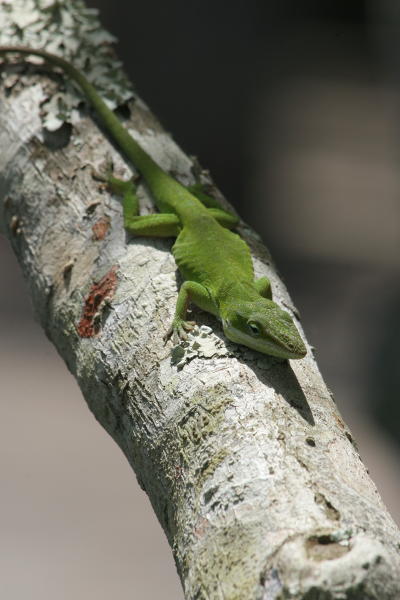 The other played hide-and-seek with me around a tree branch on two occasions spaced a few minutes apart, but this is the frame that won out over all the others. To the left is the entire frame, but below is a detail crop. Virtually all of the time, they appear matte and unreflective, yet the right sun angle will produce a hint of iridescence from the scales. That head is slightly smaller around than my little finger, just so you know.
The other played hide-and-seek with me around a tree branch on two occasions spaced a few minutes apart, but this is the frame that won out over all the others. To the left is the entire frame, but below is a detail crop. Virtually all of the time, they appear matte and unreflective, yet the right sun angle will produce a hint of iridescence from the scales. That head is slightly smaller around than my little finger, just so you know.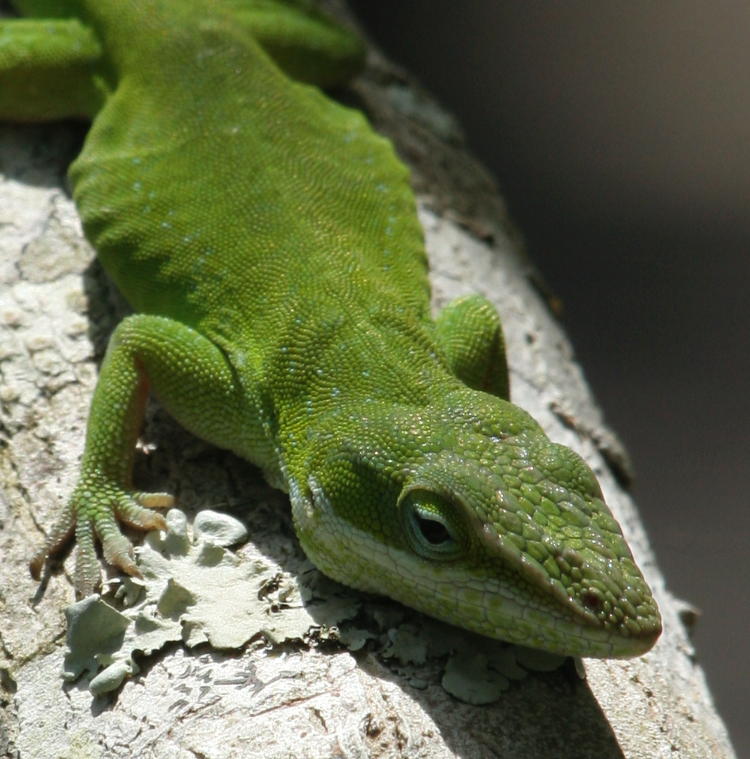

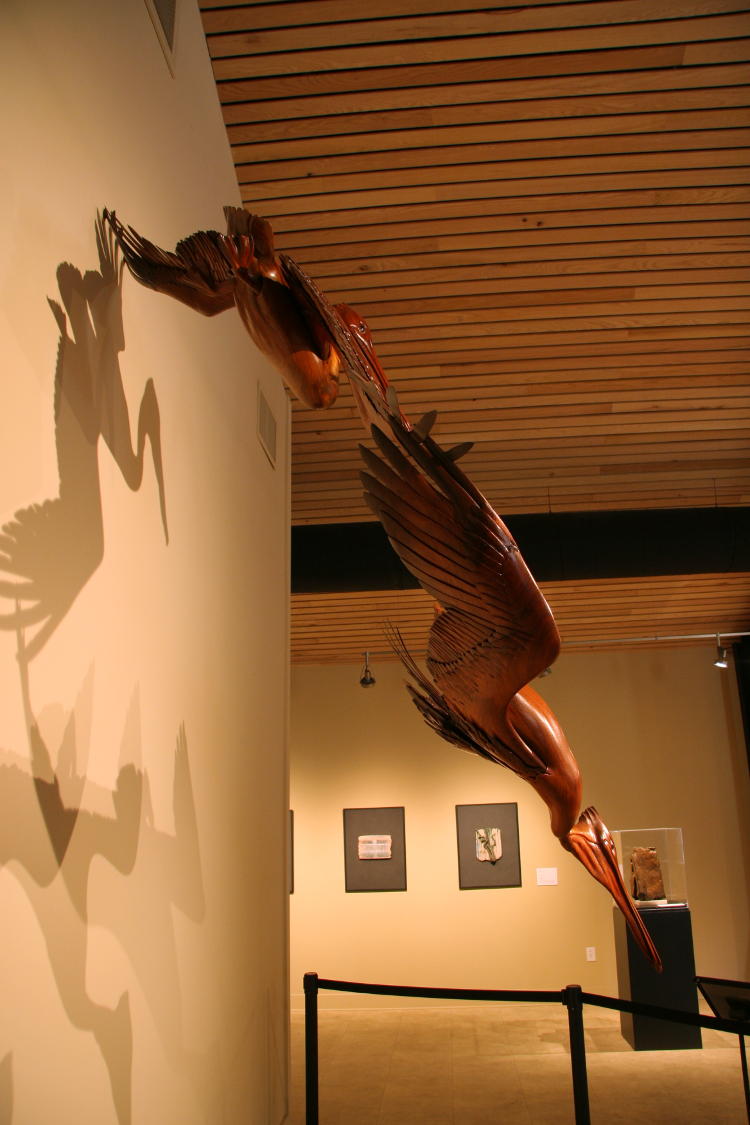



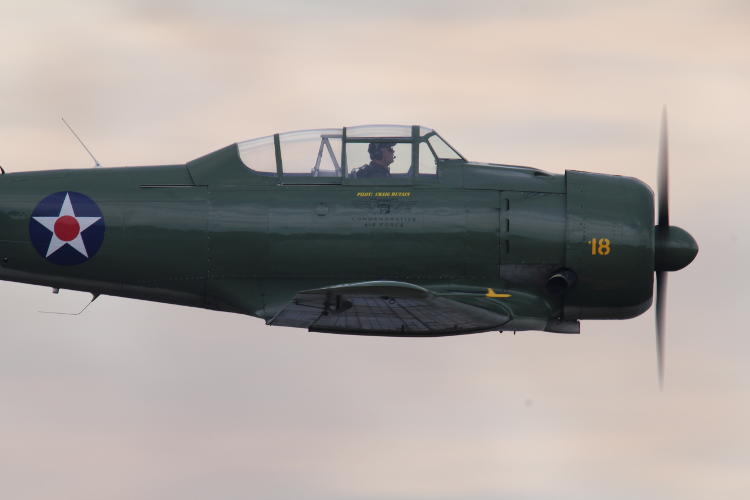

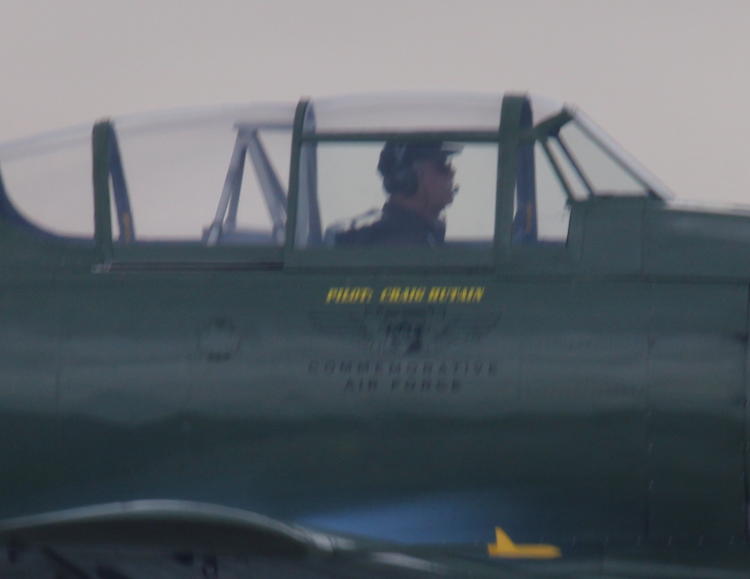


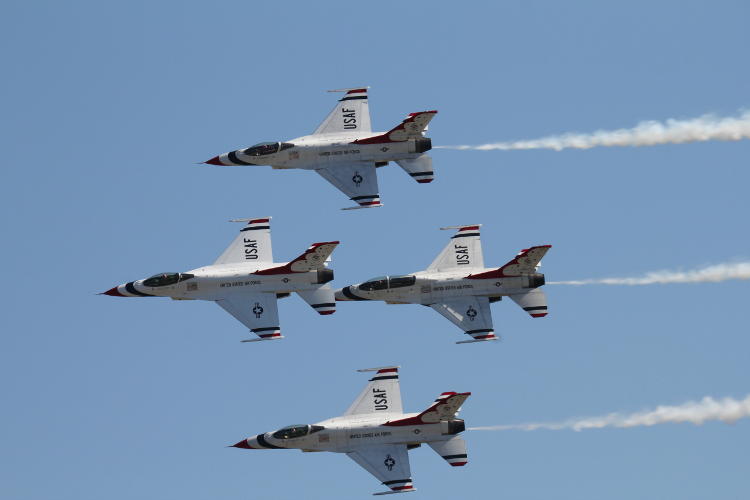
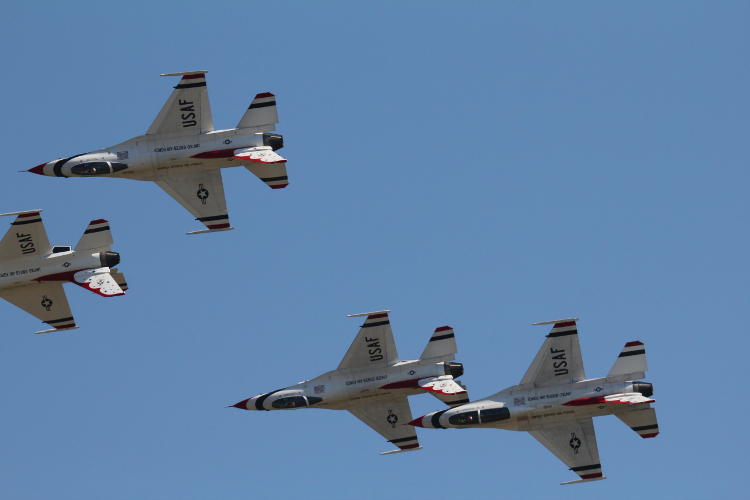

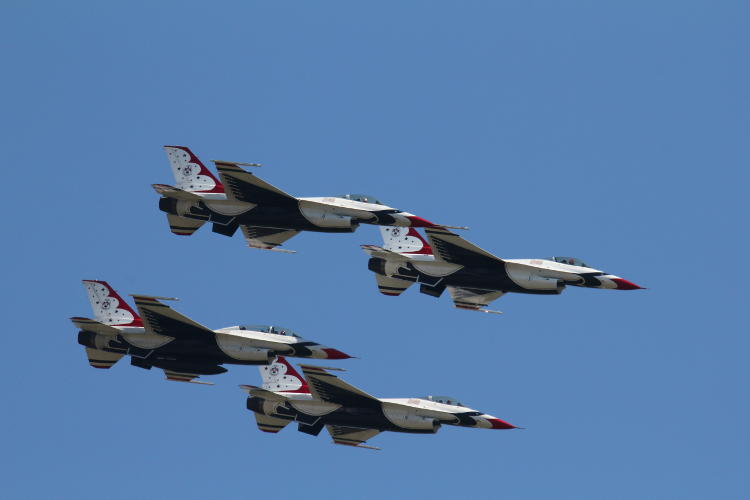
 The lead is top right of the image, and he’s the only one that watches where the flight is going. The others all watch the lead. Image top left is the right wing position, looking forward and left. Image bottom right is the left wing position, looking forward and right, while image bottom left is the tail position, looking at the flight lead above and ahead. There was, in fact, a tragic accident many years ago, during a practice session, where the flight leader suffered a control failure and was unable to pull up from a low-level pass; three other planes in formation followed him into the ground and impacted almost simultaneously.
The lead is top right of the image, and he’s the only one that watches where the flight is going. The others all watch the lead. Image top left is the right wing position, looking forward and left. Image bottom right is the left wing position, looking forward and right, while image bottom left is the tail position, looking at the flight lead above and ahead. There was, in fact, a tragic accident many years ago, during a practice session, where the flight leader suffered a control failure and was unable to pull up from a low-level pass; three other planes in formation followed him into the ground and impacted almost simultaneously.


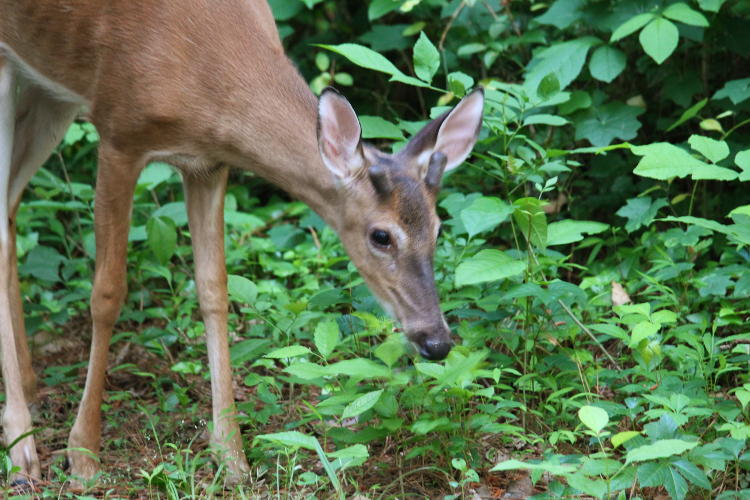

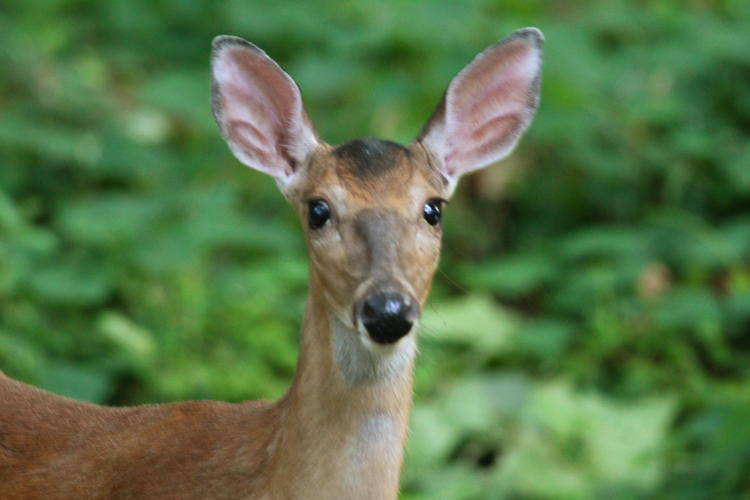 The first image at top was a buck, as can be determined by the stubby little horns – obviously, we’re talking pretty young here, and none of them were fully adult. The Girlfriend’s pet was a doe, seen here looking curiously at the source of the shutter sounds for a moment before resuming its stalking. Eventually, The Girlfriend waved her arms a little to spook off the deer, since it didn’t seem inclined to stop approaching the road despite her presence, and it (with some reluctance) hastened to join its departing siblings. I had thought that was the end of it, and resumed making noise in the back yard, but about 45 minutes later while I was grilling burgers on the deck, I realized that not only had they returned, one of them had entered the backyard and was foraging near the little pond – not quite as close as it had been to The Girlfriend, but then again I wasn’t standing silently by any stretch.
The first image at top was a buck, as can be determined by the stubby little horns – obviously, we’re talking pretty young here, and none of them were fully adult. The Girlfriend’s pet was a doe, seen here looking curiously at the source of the shutter sounds for a moment before resuming its stalking. Eventually, The Girlfriend waved her arms a little to spook off the deer, since it didn’t seem inclined to stop approaching the road despite her presence, and it (with some reluctance) hastened to join its departing siblings. I had thought that was the end of it, and resumed making noise in the back yard, but about 45 minutes later while I was grilling burgers on the deck, I realized that not only had they returned, one of them had entered the backyard and was foraging near the little pond – not quite as close as it had been to The Girlfriend, but then again I wasn’t standing silently by any stretch.